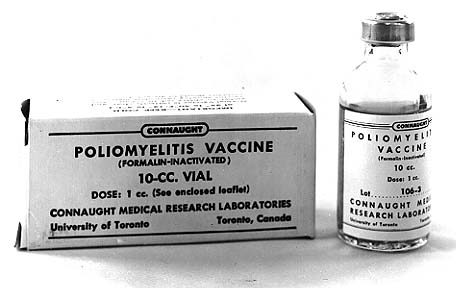What’s in the coronavirus’s genome that makes it a much better antiviral target than its spike protein?
11/12/2020 / By Evangelyn Rodriguez

Researchers have uncovered molecular interactions within the genome of the Wuhan coronavirus (COVID-19) that could lead to more effective antiviral agents. In a study published Nov. 05 in the journal Molecular Cell, a team from the University of Cambridge, in collaboration with researchers from Justus Liebig University Giessen in Germany, mapped the RNA-RNA interactions that govern the mechanisms by which the SARS-CoV-2 virus behind COVID-19 synthesizes important proteins and replicates.
According to the researchers, much attention has been focused on targeting viral proteins, specifically the spike protein, which the coronavirus uses to gain entry into its target cells. While targeting this protein is a sensible strategy, they believe that shifting the focus toward the virus’s RNA will lead to better antiviral strategies. After all, the structure of SARS-CoV-2’s RNA, which happens to make up the entirety of its genome, is critical to its function.
The coronavirus genome
Viruses like SARS-CoV-2 belong to a family of so-called RNA viruses. Instead of the usual deoxyribonucleic acid (DNA) template, these viruses’ genomes consist purely of ribonucleic acid (RNA). In animal and human cells, RNA is what DNA is converted into before it is translated into proteins.
Another thing that differentiates the coronavirus genome from human genome is that the former is composed of single-stranded genetic material, while the latter is composed of double-stranded DNA. Among RNA viruses found in nature, coronaviruses have the largest single-stranded RNA genome of all.
According to studies on coronaviruses, the transcription of their genomic RNA to messenger RNA (mRNA) – that is, a single-stranded RNA that can be translated into protein – involves a process called discontinuous transcription. In contrast to DNA transcription in humans, which (under normal circumstances) occurs without disruptions, coronavirus RNA transcription is disorderly and fragmented. The process is regulated by RNA structures that interact with each other, with viral proteins and with the molecular machinery that exists within their host cells.
But it was only recently – with the help of RNA probing techniques – that researchers were able to gather evidence of these RNA-RNA interactions occurring not only a few nucleotides away but also over long distances. These long-distance interactions within the genomes of coronaviruses not only regulate the whole process of discontinuous transcription, but they also regulate the life cycle of viruses themselves. However, up until recently, researchers have failed to map this long-range interactome of coronaviruses because of the lack of reliable methods.
Using coronavirus RNA-based interactions to stop viral replication
“Deciphering how the various structural elements along the coronavirus gRNA [genomic RNA] and sgmRNA [subgenomic mRNA] are folded and brought together in time and space is vital for understanding, dissecting and manipulating viral replication, discontinuous transcription, and translation regulation,” wrote the British-German team in their report.
To achieve what they’d set out to do, the researchers developed their own method of capturing matched RNAs for high throughput sequencing and identifying different RNA conformations that occur along the genomes of coronaviruses. They uncovered a network of RNA-RNA interactions along the genome of SARS-CoV-2 that span tens of thousands of nucleotides and allow the virus to achieve discontinuous transcription, protein translation and successful viral replication.
According to earlier studies, coronaviruses make use of a conserved structure — a stem-loop of RNA known as a frameshifting element (FSE) — to achieve ribosomal frameshifting. This event occurs during protein translation and allows the virus to produce several unique proteins from a single strand of mRNA. The researchers found this frameshifting event of particular interest since a 2013 study reported that altering this frameshifting mechanism has a deleterious effect on the replication of SARS-CoV — the coronavirus responsible for the 2003 severe acute respiratory syndrome (SARS) outbreak.
In SARS-CoV-2, the British-German team discovered that the FSE is embedded in a much larger, long-range structural bridge with high folding stability. This RNA structure, which they dubbed the FSE-arch, is highly maintained and is among the most conserved regions in the SARS-CoV-2 genome. When the researchers looked at the genome of another coronavirus, MERS-CoV — the virus behind the Middle East respiratory syndrome (MERS) — they found that the virus has a homologous FSE-arch surrounding its FSE. Several plant RNA viruses have also been reported to rely on a similar structure to regulate frameshifting. This FSE-arch, therefore, presents a good target of future therapeutics designed to stop coronavirus transcription and replication.
Another important discovery made by the team is that, apart from interacting with itself, SARS-CoV-2’s genomic RNA also interacts with cellular RNA inside its host cell. Studies have found that the interactions between the viral RNA and the host RNA is important for regulating the replication of some RNA viruses, such as the hepatitis C virus and the Zika virus. In the case of SARS-CoV-2, its RNA also interacts at specific sites with small nuclear RNAs and long cellular RNAs present in the cytoplasm of its host. Because of the critical role these interactions play in the replication of SARS-CoV-2, the researchers believe they are promising targets for antiviral strategies. (Related: Green tea, zinc, and hydroxychloroquine: Coronavirus cure?)
“Researchers previously proposed that long-distance interactions along coronavirus genomes are critical for their replication and for producing the viral proteins, but until recently[,] we didn’t have the right tools to map these interactions in full. Now that we understand this network of connectivity, we can start designing ways to target it effectively with therapeutics,” said Dr. Omer Ziv, the study’s lead author.
“Our findings illuminate RNA [structure-based] mechanisms governing replication, discontinuous transcription, and translation of coronaviruses, and will aid future efforts to develop antiviral strategies,” the researchers said in their report.
Learn more about the ongoing coronavirus pandemic at Pandemic.news.
Sources include:
Submit a correction >>
Tagged Under:
antiviral targets, breakthrough, coronavirus, coronavirus genome, covid-19, discoveries, infectious disease, outbreak, pandemic, research, RNA viruses, SARS-CoV-2, viral infections, viral replication, viral transcription
This article may contain statements that reflect the opinion of the author
RECENT NEWS & ARTICLES
Infections.News is a fact-based public education website published by Infections News Features, LLC.
All content copyright © 2018 by Infections News Features, LLC.
Contact Us with Tips or Corrections
All trademarks, registered trademarks and servicemarks mentioned on this site are the property of their respective owners.





















